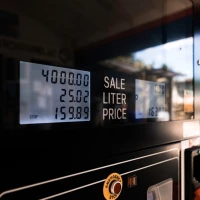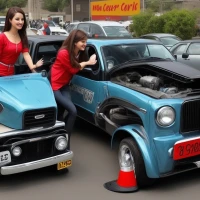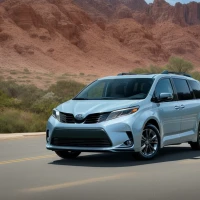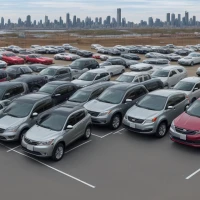Motorcycle Hand Signals: Everything You Need To Know For Safe Rides. Ready to ride like a pro? Discover the crucial hand signals every motorcyclist must master to ensure safety on the roads. From basic turns to emergency alerts, we’ve got you covered with the ultimate guide to staying safe and in control. Buckle up—this read is your ticket to safer, smarter rides!
Why Use Hand Signals?
Understanding motorcycle hand signals is crucial for ensuring safety on the road. Motorcyclists often use these signals to communicate with other riders and drivers when their electronic signals might be less visible or functional. So, why use hand signals? They provide an immediate, clear method of relaying intentions such as turning, stopping, or changing lanes, especially in situations where visibility is low or other drivers may not easily see electrical indicators.
When riding in groups, hand signals are vital for maintaining cohesion and ensuring that everyone is aware of planned maneuvers. A simple hand gesture can prevent accidents by alerting fellow riders to upcoming turns, stops, or road hazards. Additionally, hand signals can bridge the communication gap when the electronic signals fail or when a rider’s brake lights are obscured.
Another compelling answer to “why use hand signals?” is their contribution to defensive riding. By clearly displaying intentions through hand signals, motorcyclists can make their actions predictable to other road users, thereby reducing the likelihood of collisions. Adept use of hand signals enhances not only the individual rider’s safety but also promotes a culture of heightened awareness and mutual respect among all road users. In summary, mastering motorcycle hand signals is a fundamental aspect of road safety, benefiting both solo riders and those traveling in groups.
Motorcycle Hand Signals For Driving In Normal Traffic
Motorcycle hand signals are essential tools for ensuring safe rides in regular traffic. Communicating effectively with other drivers and fellow riders is crucial, particularly when riding in urban environments. Understanding Motorcycle Hand Signals For Driving In Normal Traffic can significantly reduce the risk of accidents and improve the overall riding experience.
The left hand is primarily used for signaling, as the right hand maintains throttle control. Key signals include the left turn—extending the left arm horizontally—and the right turn, where the left arm forms an “L” shape with the elbow bent upwards. Additionally, the slow down or stop signal involves extending the left arm downward at a 45-degree angle with the palm open.
Mastering Motorcycle Hand Signals For Driving In Normal Traffic ensures that other road users are aware of your intentions. This awareness helps to create a safer environment for everyone on the road. Riders should practice these signals regularly and use them consistently. Remember to make signals clear and start signaling well in advance of a maneuver to give others adequate time to respond.
Being well-versed in these signals not only enhances personal safety but also fosters a sense of camaraderie among riders. In sum, understanding and using Motorcycle Hand Signals For Driving In Normal Traffic is fundamental to mastering safe riding practices.
Motorcycle Hand Signals For Driving With Other Motorcycles:
Mastering motorcycle hand signals is essential for ensuring safety while riding in groups. Motorcycle hand signals for driving with other motorcycles facilitate clear communication among riders, preventing accidents and misunderstandings. Crucially, these signals allow riders to adapt to sudden changes in road conditions or unexpected obstacles.
For instance, the left turn signal, where the left arm is extended straight out, signals an impending left turn, ensuring trailing riders adjust their trajectory accordingly. Similarly, the right turn signal, characterized by bending the left arm upwards at a 90-degree angle, alerts fellow riders to an upcoming right turn. Furthermore, the stop signal, involving the rider extending their left arm downward with open palm facing backward, is vital for enabling safe and synchronized stops.
Another essential hand signal is the hazard signal, used to warn the group of road hazards. Here, the left arm is raised and bent upwards, waving towards the chest. Each rider can relay this signal down the formation, ensuring everyone is aware of the danger.
Riding as a group requires cohesion and understanding. By diligently using motorcycle hand signals for driving with other motorcycles, riders cultivate a safer, more enjoyable experience. Memorizing and practicing these signals builds trust, reduces risks, and enhances the overall group riding experience.
Used for sale near me
Motorcycle hand signals are essential for every rider, ensuring clear communication and promoting safety on the road. Understanding these signals can significantly enhance your riding experience, whether you’re embarking on a solo journey or cruising in a group. Each hand signal conveys specific instructions to fellow riders or other motorists, such as signaling a left turn, right turn, or stopping. Mastering these gestures not only keeps you safe but also fosters a sense of camaraderie among motorcyclists.
Hand signals often come in handy, particularly when your motorcycle’s electronic signal system malfunctions. Whether you’re navigating city streets or wide-open highways, proficient use of hand signals can prevent accidents and misunderstandings. If you’re looking to practice or refresh your skills, consider finding motorcycles used for sale near me. Purchasing a pre-owned bike gives you the opportunity to become familiar with hand signaling on a variety of models without breaking the bank.
When scouting for motorcycles used for sale near me, ensure the bike is in excellent condition and meets your requirements. This investment in a pre-owned motorcycle can substantially boost your confidence and technique, making your rides safer and more enjoyable. Remember, effective communication is key in motorcycling, and mastering hand signals is an integral part of that.








